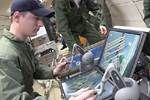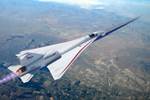NASA calls to industry to develop new flight technologies to reduce carbon emissions
The agency is seeking partners to capitalize on next-generation technologies to design, build, test and fly a large-scale demonstrator that will lead to future single-aisle aircraft.
NASA (Washington, D.C., U.S.) announced on June 29 that the the agency is seeking partners to develop technologies needed to shape a new generation of lower emission, single-aisle airliners that passengers could see in airports in the 2030s.
Through its new Announcement for Partnership Proposals, NASA intends to fund one or more awards to design, build, test and fly a large-scale demonstrator with an advanced airframe configuration, as well as related technologies. The agency’s sustainable flight demonstrator (SFD) project aims to reduce carbon emissions from aviation and ensure U.S. competitiveness in a high-demand area of aircraft design — single-aisle commercial airliners.
“Since its creation, NASA has worked with industry to develop and implement innovative aeronautics technology — and has shared with the world,” NASA administrator, Bill Nelson, says. “Now, with this ambitious new project, we’re again joining with U.S. industry to usher in a new era of cutting-edge improvements that will make the global aviation industry cleaner, quieter and more sustainable.”
The agency is said to innovate for the benefit of humanity and any new aircraft and technologies developed through this project will help the U.S. achieve net-zero carbon emissions from aviation by 2050 — one of the environmental goals articulated in the White House’s U.S. Aviation Climate Action Plan.
NASA’s plan is to complete project testing by the late 2020s so any new green technologies can be validated and inform industry decisions about the next generation of single-aisle aircraft entering the market by the 2030s.
“In the coming years, global air mobility will continue to grow at a steady pace, and single-aisle aircraft will continue to carry the majority of that passenger traffic,” Bob Pearce, NASA associate administrator for the Aeronautics Research Mission Directorate, adds. “Working with industry, NASA intends to seize this opportunity to meet our aggressive environmental goals while fostering continued global leadership of the U.S. aviation industry.”
NASA expects to select at least one industry partner in early 2023 for a Funded Space Act Agreement with the agency’s Armstrong Flight Research Center (Edwards, Calif., U.S.). Such an agreement would provide funding and access to NASA facilities and expertise. The agreement would capitalize on private industry knowledge and experience, with an awardee laying out a proposed technical plan and contributing significant funding to the project.
For this type of agreement, NASA would not procure an aircraft or any other hardware for its missions — the goal is maturing new and innovative technologies and capabilities. The industry partner will design, build, test and fly a large-scale demonstrator, and NASA will obtain ground and flight data that agency and industry teams can use to validate the airframe configuration and associated technologies.
The flight project is an activity under NASA’s Integrated Aviation Systems Program, and it is a key element of the Sustainable Flight National Partnership, which focuses on developing new sustainable commercial transport vehicle technologies.
Learn more about NASA’s Sustainable Aviation efforts here.
Related Content
-
Plant tour: Albany Engineered Composites, Rochester, N.H., U.S.
Efficient, high-quality, well-controlled composites manufacturing at volume is the mantra for this 3D weaving specialist.
-
ASCEND program update: Designing next-gen, high-rate auto and aerospace composites
GKN Aerospace, McLaren Automotive and U.K.-based partners share goals and progress aiming at high-rate, Industry 4.0-enabled, sustainable materials and processes.
-
Combining multifunctional thermoplastic composites, additive manufacturing for next-gen airframe structures
The DOMMINIO project combines AFP with 3D printed gyroid cores, embedded SHM sensors and smart materials for induction-driven disassembly of parts at end of life.

















